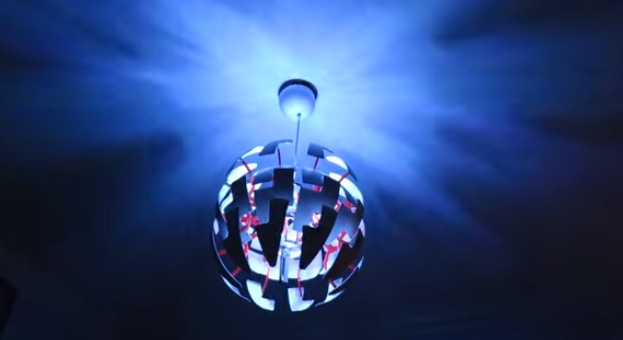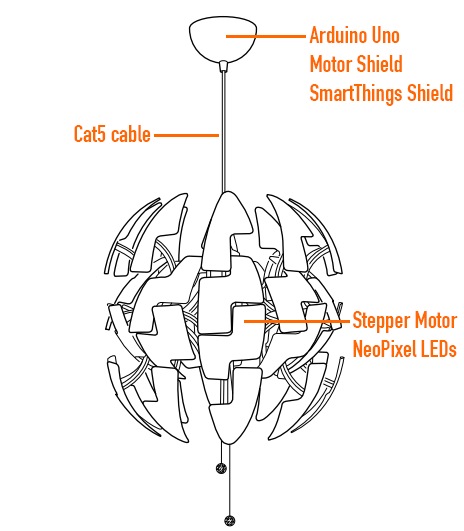Smart home gadgets and kitchen tech that make great gifts
Keeping your home clean, organized and secure can be a chore, and your loved ones likely feel the same way. Fortunately, there are gadgets that can help make it a little easier. We review smart speakers, robotic vacuums and Instant Pots all year long, and for the holiday season we’ve compiled a list of our recent favorites in the home tech space that will make excellent gifts. And your giftee doesn’t have to be tech savvy to use all of them either — plenty of our recommendations amount to baby steps into the smart home world for those who would rather start off slow.
Instant Pot Pro
We almost always recommend the multi-purpose Instant Pot in our holiday gift guides and this year is no exception. But instead of giving your loved one the regular model, why not level up? Designed for avid cook, the Instant Pot Pro brings several key upgrades over previous models. The inner pot has an extra thick bottom that lets you heat it on the stove, plus handles that make it easier to lift. It has 28 customizable programs for different foods, and there are five favorite buttons that you can assign to frequently cooked meals. It also has steam release reminder alerts with 5- and 10-minute pre-sets. It’s available in two different sizes, but we’d recommend the six-quart version for most families.
Buy Instant Pot Pro at Amazon - $130Anova Precision Cooker Nano
Sous vide cooking essentially means keeping foods in a temperature-controlled water bath, ensuring they’re done to perfection. This used to require expensive equipment, but sous vide cookers have become inexpensive over the past few years. One such device is the Anova Precision Cooker Nano, which can be found for around $100, and can be controlled through either an app or physical buttons. It’s one of the most affordable sous vide machines around, yet it delivers precise temperature controls. The app also comes with an assortment of helpful recipes to help get users started on their sous vide journey.
If you don’t mind spending a bit more, we also like Breville’s Joule for its sleek, minimalist design. It doesn’t have the physical controls that the Nano does, but it makes up for that with its compact form factor that’s a little easier to fit in a kitchen drawer. Either option will ensure medium-rare steak, juicy chicken breasts or just a perfectly soft-cooked egg.
Buy Precision Cooker Nano at Amazon - $130Buy Breville Joule at Amazon - $200Anova Precision Oven
If your loved one is a great cook with counter space to spare, consider getting them the Anova Precision Oven. It’s a luxury purchase, for sure, but it’s well worth the price for serious home cooks. This combination convection-steam oven can cook food in both wet and dry heat, letting you control temperature and humidity levels. What this means is that your special someone can make juicy roast chicken with crispy skin as well as crusty artisan-style bread all in one machine. Plus, it has WiFi and a companion app that lets cooks keep an eye on their food from anywhere.
Buy Precision Oven at Anova - $599Google Nest Doorbell Battery
Video doorbells are useful for seeing who’s at the front door from the comfort of your couch. One of our favorites is the Nest Hello (now called the Nest Doorbell Wired), which is why we were pleased when Nest came out with a new battery-operated version, the Nest Doorbell Battery. It’s a great gift for both homeowners and renters, as you don’t need to hardwire it. Battery life is anywhere from one to six months depending on how active it is (it’s shorter if you live on a busy street, for example). The Doorbell notifies them whenever there’s a person, animal or vehicle near the front door. It can also let them know when a package has been placed, which is great for pre-empting theft. In addition, it offers three hours of event video history for free, with the option to purchase more space through a Nest Aware subscription.
Buy Nest Doorbell Battery at Best Buy - $180Google Nest Hub (2nd gen)
If you do get a Nest Doorbell for someone, you might want to consider gifting them a Nest Hub as well. The two are designed to work together: anytime someone rings the doorbell, the camera view of who’s at the front door will show up on the Nest Hub’s screen. Even without the doorbell, however, the smart display is a great device to have around the home — especially if your loved one already uses the Google Assistant. It works as a digital photo frame and they can use it to watch YouTube and Netflix. It can also make calls via Google Duo and offers recipe videos along with step-by-step cooking instructions. If the user so chooses, they can track their sleeping patterns when they place the device next to their bed.
Buy Nest Hub (2nd gen) at Best Buy - $100Amazon Echo Show 8
For those who prefer Alexa over the Google Assistant, the Echo Show 8 is a great alternative to the Nest Hub. It also works as a digital photo frame and its 8-inch display is a good size for streaming shows from Amazon Prime, Netflix and Hulu while prepping dinner. It can also be used to keep up with the news, check the weather and control smart home devices. Since Amazon has a partnership with Allrecipes and Food Network Kitchen, users can find assorted recipes and instructional videos as well.
Buy Echo Show 8 at Amazon - $130Mila Air purifier
Air purifiers are great gifts for anyone who has allergies, lives in a polluted area or just wants to breathe easier at home. And if you want to give someone a smarter air purifier, consider the Mila Air. It ships with one of seven pre-configured HEPA filters that can filter out particles and allergens like pollen and dust. It also has a ton of customization options: there’s a “Housekeeping Service” mode that goes full blast when no one’s in the room, a “Sleep Mode” that turns the lights off and reduces the fan speeds at night, plus a “White Noise” mode that mimics soothing sounds like waterfalls. The Mila also has a bevy of sensors that can tell you if there’s carbon monoxide in the air, or if the humidity is too high.
Buy Mila air purifier - $349Blink indoor camera
Blink’s indoor camera offers the gift of peace of mind in a compact and affordable package. Your loved one will appreciate the fact that Blink is wireless and battery-powered; since they don’t have to place it near an electrical outlet, it can sit almost anywhere. They also won’t have to worry about recharging the camera since it can last up to two years on its two included AA batteries. Aside from just letting them monitor their home, it also features customizable motion alerts so they’ll only get alerted when they want to. Plus, there’s two-way audio so they can hear and speak to the person (or pet) on the other end.
Buy Blink Indoor at Amazon - $80iRobot Roomba 694
Maybe you have someone in your life who could use a little help cleaning up after themselves. For that, we recommend getting them one of our favorite robot vacuum cleaners, the iRobot Roomba 694. It can suck up dirt and debris from both hardwood and carpeted floors, with an edge-sweeping brush taking care of dusty corners. The companion app lets them control it remotely, or they can set up a cleaning schedule so the little robot can do its thing at a set time. It even automatically docks and recharges itself if it’s low on battery.
Buy Roomba 694 at iRobot - $275August WiFi smart lock
Smart locks are a great way to add security and convenience to any home. We recommend August’s WiFi smart lock because it’s easy to use, and since it fits over an existing deadbolt, it’s great for both homeowners and renters. It lets your loved ones unlock the door completely hands-free, which is great if they have their arms full of groceries. They can set it so that it automatically locks once the door is closed, or after a set period of time. If someone’s at the door but they’re at the office or in the backyard, they can easily let them in with a single finger tap. Plus, they can grant access for specific friends or family members, which means they might never need to put the key under the doormat ever again.
Buy August WiFi smart lock at Amazon - $229TP-Link Kasa smart plug
With a smart plug, any appliance can be part of a connected home for not a lot of money. TP-Link’s Kasa smart plug is a particularly good one because it is both affordable and incredibly compact (and if you’re really short on space, there’s a mini version that’s even smaller). Together with its companion app, they can schedule a timer to turn on and off anything from Christmas lights to a coffee maker. It’s also compatible with both Alexa and Google Assistant, which lets them add voice control to any outlet.
Buy Kasa smart plug (4 pack) at Amazon - $30Buy Kasa mini smart plug (2 pack) at Amazon - $20Eero 6 WiFi mesh router
With most of us having so many gadgets and smart home devices, perhaps the best thing you can give your loved one is the gift of better WiFi to keep things running smoothly. Amazon’s Eero routers will deliver just that. The latest models support WiFi 6, the latest and fastest WiFi standard, and will support 75-plus devices simultaneously. It also covers up to 1,500 square feet with WiFi speeds up to 900 Mbps, so it’s unlikely they’ll ever have to deal with dead spots or buffering again. The Eero 6 also comes with a built-in Zigbee smart home hub that lets them connect compatible devices without having to purchase a separate device.
Buy Eero 6 router at Amazon - $129Philips LED Smart Bulb starter kit
Add some color to your loved one’s life with the Philips LED smart bulb starter kit, which comes with four multi-color bulbs plus a Hue Hub that connects them all together. The bulbs can fill the room with millions of different colors so they can choose from warm moody lighting for a cozy atmosphere or rainbows for parties. In the companion app, they can create timers and routines so that their lights gradually turn on in the morning or off in the evening. And it’s scalable: They can eventually have up to 50 lights connected to one Hue Hub, giving them the freedom to outfit their whole home with smart lights if they wish.
Buy Philips Hue starter kit at Amazon - $195




















































